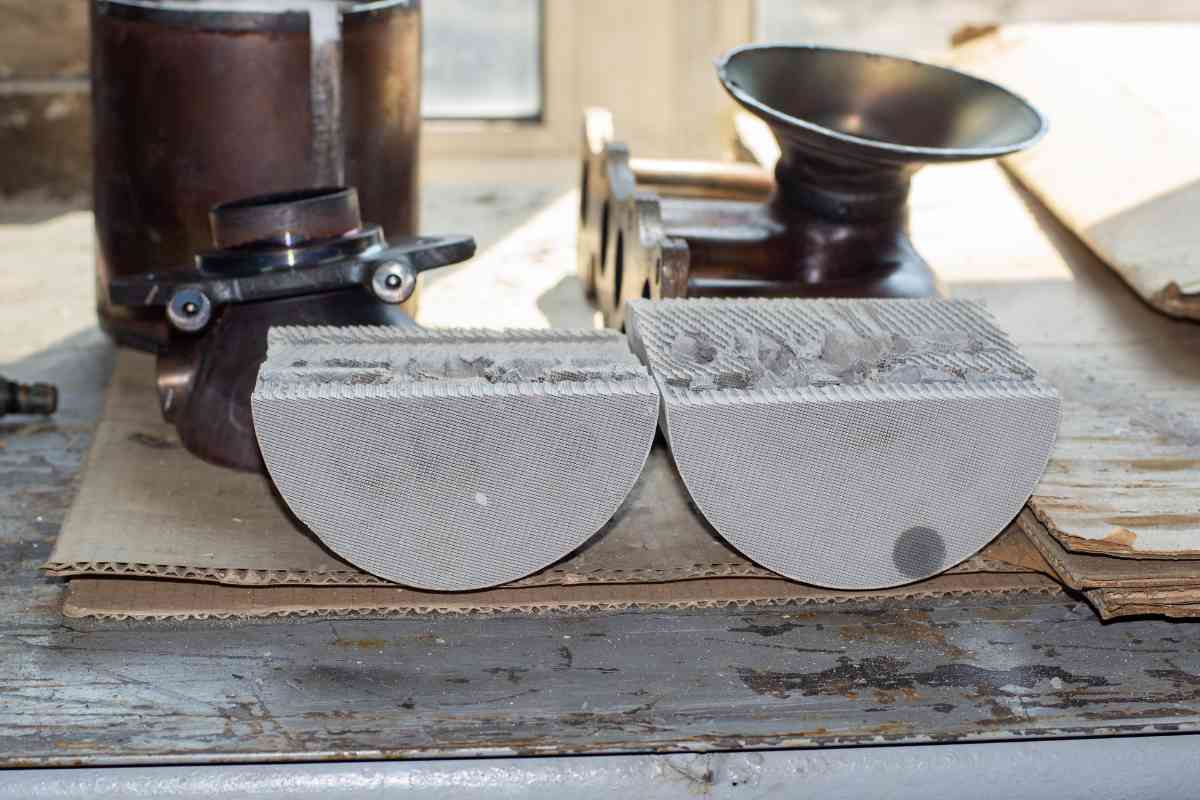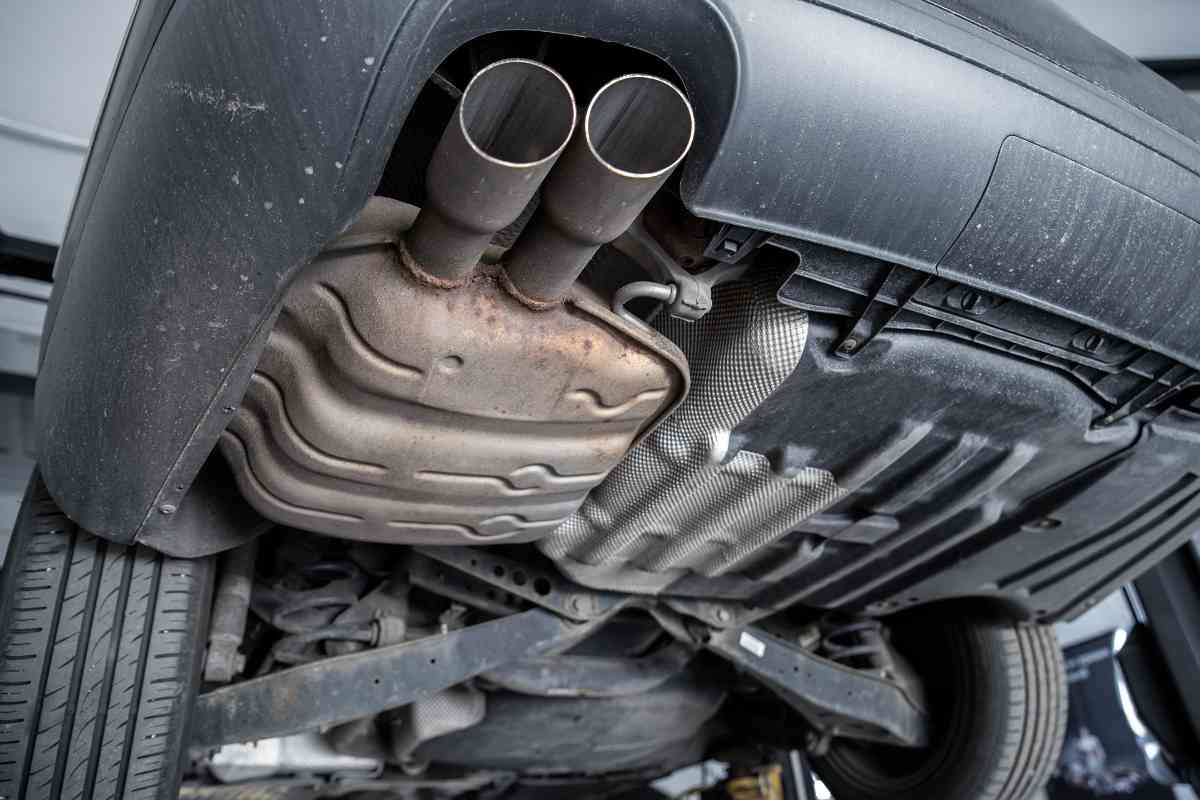Can I Replace My Catalytic Converter With A Straight Pipe?
Your catalytic converter may be giving you some car troubles. But is it a good idea to replace a cat with straight pipes?

Replacing your catalytic converter with straight pipes is possible, but it’s a bad idea. Replacing converters with straight pipes will harm your engine. As well, it may be illegal to run straight pipes in your area since running them is really loud.
I’m an ASE-certified mechanic, and as one, it’s our policy to never allow straight pipes to leave the shop.
Doing so in our area is illegal because it causes too much noise pollution. And even if we were allowed to do so, we wouldn’t because the catalytic converter provides vital engine functionality that, without, will do engine damage.
Suggested Reading: Will A Clogged Catalytic Converter Cause Loss Of Power?
What Are Straight Pipes?
Straight pipe is a term that refers to an exhaust system that has no muffler, resonator, or catalytic converter.
Basically, the whole exhaust system from the exhaust manifold back is removed.
Doing this may relieve back pressure from an engine and increase the engine’s performance in some cases. In a regular exhaust system, exhaust pressure builds up in the system, making the engine work harder to expel exhaust gasses.
Without the restrictions brought on by an exhaust system, a straight pipe system can expel exhaust gasses as soon as they are created since there are no restrictions on the system. This relief of back pressure in the engine causes an increase in engine performance.
Typically, motorcycle engines use straight pipes to make the engine sound louder.
Because a motorcycle is performance-based, straight pipes also offer an increase in engine performance. But the motorcycle’s engine was designed for straight pipes.
That means the correct size pipes were fitted to the motorcycle and installed perfectly, making sure no damage would be done to the engine once installed.
What Is A Catalytic Converter?
A catalytic converter is a device in your exhaust system that converts gasses that your engine creates into less pollutant ones.
The following list are the chemicals your catalytic converter targets and changes.
- Carbon monoxide → Carbon dioxide
- Hydrocarbons → water and carbon dioxide
- Nitrogen Oxides → Nitrogen and Oxygen
The converter changes the gasses from your engine by placing a precious metal such as platinum or palladium in the flow of your exhaust.
When the exhaust gas runs over the precious metal, mixed with the heat from the exhaust gas, the catalyst (precious metal) causes a conversion.
Once the conversion of your exhaust gasses into nonpollutant gasses takes place, they are expelled from your vehicle, where they are released into the atmosphere.
Catalytic converters help fuel burn more efficiently by using o2 sensors at the intake and outtake of the catalytic converter.
The o2 sensors monitor the air fuel ratio of exhaust gasses before and after the gasses are converted by the catalytic converter.
These sensors report if the catalytic converter is working correctly. If air-fuel ratio levels are too high or too low, the oxygen sensors report these numbers to the vehicle’s computer.
Once reported to the computer, the computer changes how much fuel is injected into the cylinder during the combustion cycle.
The exhaust gasses that are converted into non-pollutant gasses are easier to push out through the muffler, causing your engine to do less work. This increases fuel economy since the exhaust stroke encounters less resistant, non pollutant exhaust gasses instead of heavy pollutant ones.
Learn More: Will A Clogged Catalytic Converter Cause Your Car To Lose Power?
Problems with Straight Pipes

If you do decide to replace your catalytic converters with straight pipes despite all the good advice, you can expect to encounter some problems.
Some serious ones, at that. The first problem you’ll face is noise.
The engine makes a loud noise that is usually ‘muffled’ by the vehicle’s muffler and resonator. Because these items work very well, most people don’t realize how loud car engines actually are.
A car with a muffler and resonator clocks in around 70 decibels, which is the sound of a vacuum. A car with straight pipes can reach up to 120 db which is the same loudness as a jet engine during take off.
The muffler and resonator do a really good job of making the engine quiet, which is why some states will require you to have one installed if they catch you running straight pipes. In California, for example, you will be cited for anything that runs over 95 db.
An engine running at 120 db consistently will sport some extra vibrations as well. These vibrations can cause extra wear on rubber components such as motor mounts.
Motor mounts support your engine in the engine bay and are made of metal and rubber.
If the rubber that supports your motor is in constant vibration, these mounts will be compromised in half the time they would with a car running at 70 db.
Other common components in the vehicle’s engine bay would be susceptible to vibration damage too, such as hoses, clamps, plastic items, and items with low clearance.
Another problem with straight pipes is that, since there’s no restriction on the exhaust, and they flow freely, severe engine damage can occur to the valves.
Since the exhaust gasses run freely and unrestricted, the whole engine will run with an increased temperature.
This will cause the exhaust valves to run hotter which can risk damage to them, which would mean replacing them down the line.
Replacing valves on an engine is an intricate and expensive job, so it’s best to avoid doing things to your car that will necessitate a thing such as a valve job.
Straight pipes will make your neighbors hate you, sure. But they will also vibrate your car into an early grave.
When And How To Do Straight Pipes
Solely replacing your catalytic converter with straight pipes to get around buying a new one is a bad idea. The only real case for adding straight pipes to your car is for adding performance to a track car or making your car louder.
The removed back pressure from the exhaust system adds some added engine performance, but the horsepower increase is minimal. It won’t be noticeable in everyday driving.
The only place you’ll notice the horsepower increase is by the clock at the quarter mile, and even then, you’ll only notice it by tenths of a second.
The louder noise will be noticeable immediately, but having a loud car doesn’t mean it’s fast.
More people are noticing this, which is why loud cars are falling out of fashion.
When you do straight pipes, you’ll want to bring the vehicle to an exhaust shop and have them do the job.
A lot can go wrong running straight pipes even though it seems like a fairly simple job. It’s best to leave it up to a welding and exhaust professional to install straight pipes to minimize and avoid any unnecessary damage.

Suggested Articles:
- New catalytic converter break-in period
- Can An Oil Change Affect Your Car’s Catalytic Converter?
- Can Seafoam Clean A Catalytic Converter?
- New catalytic converter smell
- Does catalytic converter affect fuel consumption
- What is the purpose of a catalytic converter?
- Rough Idle: Could A Clogged Catalytic Converter Be The Culprit?
Key Takeaways
- Straight pipes is an exhaust system that has no muffler, resonator, or catalytic converter.
- A catalytic converter converts harmful gasses into less pollutant ones.
- A car with straight pipes is as loud as a jet engine during take off.
- Straight pipes can cause damage to the exhaust valves.
- It’s best to leave it up to a welding and exhaust professional to install straight pipes.
